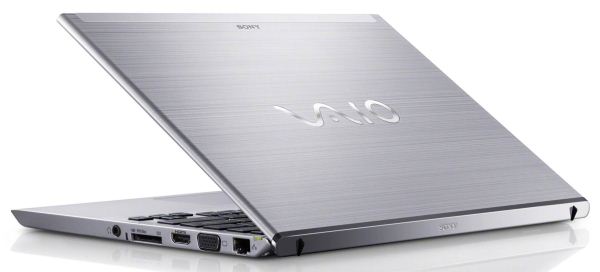Holiday 2012 Ultrabook and Ultraportable Guide
by Jarred Walton on December 12, 2012 4:00 AM ESTHoliday 2012 Ultrabook and Ultraportable Guide
So far this holiday season, we’ve provided some buyer’s guides for system builders—Trinity-based desktops, Small Form Factor builds, and even DIY Workstations. Today we’re going to ditch the DIY sector and instead look at pre-built laptops, with a focus on Ultrabooks and other ultraportables. Not everyone needs or even wants an ultraportable, so we recognize that the recommendations here are for a specific subset of users, but if you’re looking for something highly portable and you don’t mind paying a bit more for quality, we have some suggestions.
Before we get to the recommendations, it’s important to keep in mind the difference between an Ultrabook and other ultraportables. Simply put, Ultrabook is Intel’s big initiative right now to get more of their silicon into laptops, along with some requirements designed to make such laptops more responsive. Unfortunately, the same things that make an Ultrabook faster also tend to make it cost more, and so we have a split between Ultrabooks that have pure SSD storage and those that use a hybrid arrangement with a small caching SSD and conventional hard drive storage.
On the non-Intel side of the equation, AMD’s low-power Trinity APUs tend to have less CPU performance with perhaps better GPU performance, but they’re almost always targeted at the value market. That means that in addition to swapping out the Intel CPU for an AMD APU, you also typically lose the SSD storage. Still, if all you really want is something portable with great battery life that can be a viable compromise.
Ultrabooks and ultraportables do tend to cost more for a similar level of performance compared to regular laptops—just like laptops cost more for a similar level of performance compared to desktops. Making computers smaller is more difficult, and often manufacturers need to bin parts to find those that run cooler and/or use less power. Just like a Core i7-3770K and an i5-3570K are fundamentally the same part—the i7 part just has Hyper-Threading turned on and slightly higher clock speeds—most ULV parts are the same core design as standard voltage chips, but they’re selected to find those than need less power and/or run properly at a lower maximum clock speed. Instead of paying more for a part that can run faster, you end up paying more for a part that doesn’t use as much power and runs cooler.
With that out of the way, we’re targeting three price categories for these Ultrabooks/ultraportables: under $750, around $1000, and the no-holds-barred $1250+ range. We’ve tried to get a feel for everything currently available for the various categories, and we’ve selected a couple options for each price bracket (as well as some honorable mentions where appropriate).











77 Comments
View All Comments
darwinosx - Wednesday, December 12, 2012 - link
Your mom likes them.sandro - Wednesday, December 12, 2012 - link
Shouldn't the 13" MBP Retina be considered an ultrabook? How does it stand against the high-end models described here?JarredWalton - Wednesday, December 12, 2012 - link
Awesome display, costs an arm and a leg. I'm not impressed enough with the rMBP 13 to recommend it, plus it's using full voltage parts which is sort of where I drew the line in this guide.TEAMSWITCHER - Wednesday, December 12, 2012 - link
You gotta shop around. I found the 13" MacBook Pro Retina for $1560.00. At that price it's worth considering. It's not a machine for modern gaming - just solid mobile computing.I used to put all my money into a single kick-ass Laptop - using a monitor, keyboard, and mouse for desk work and gaming. But now, I split the load between my 13" Retina Macbook and a Desktop PC. Services like DropBox and iCloud has enabled me to easily move between machines.
Mumrik - Wednesday, December 12, 2012 - link
Careful now. You're ruining Anandtech's supposedly pro Mac bias.prdola0 - Wednesday, December 12, 2012 - link
You somehow missed the Dell XPS 14, which fits into your midrange category quite nicely. It is 14", weights under 5 pounds (4.6 exactly) and has quite good graphics for a small form factor - GT630M. If I remember correctly this is the very popular GT540M from previous generation, but moved to the 28nm process. It can even handle 3D Vision over 3D TV Play.You might want to add it to the list, since it's a very capable system.
Pino - Wednesday, December 12, 2012 - link
Where the X1 Carbon fits here?!J_Tarasovic - Wednesday, December 12, 2012 - link
I'll call your X1 Carbon and see you the forthcoming X1 Carbon Touch.yboy403 - Wednesday, December 12, 2012 - link
I feel like the series 9 13" or 15" should have been in here somewhere. They compare very well to the UX31A on everything but price, and wouldn't have been out of place in the high end section.nathanddrews - Wednesday, December 12, 2012 - link
I know it should be assumed with "Hello 1080p Touchscreens!", but you forgot to mention that the XPS 12 has a 12.5" 1080p touchscreen and you made no mention of its quality or the tech behind it. IPS? TN? Or do we have to, I don't know, wait and be patient for the full review? ;-)It's a shame they couldn't have packed a discrete GPU in there, too.